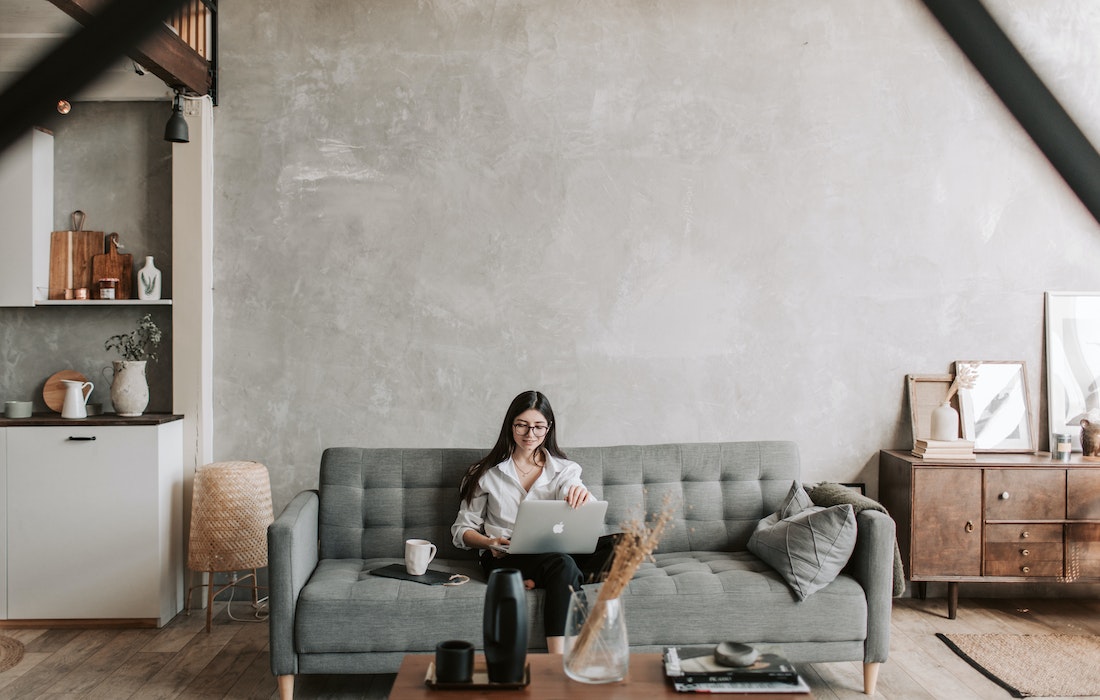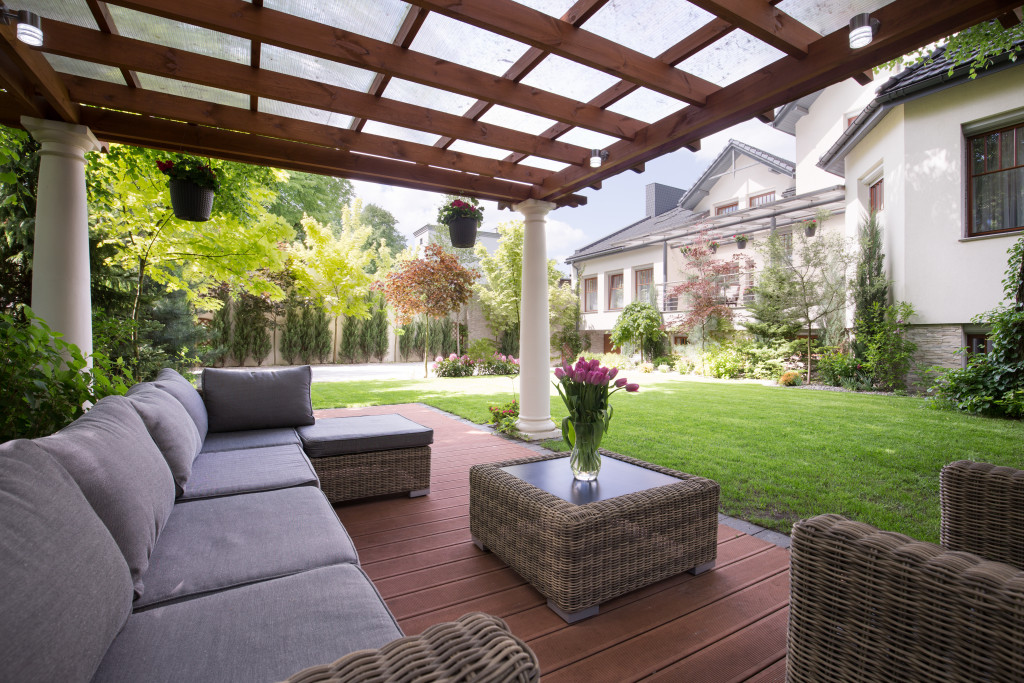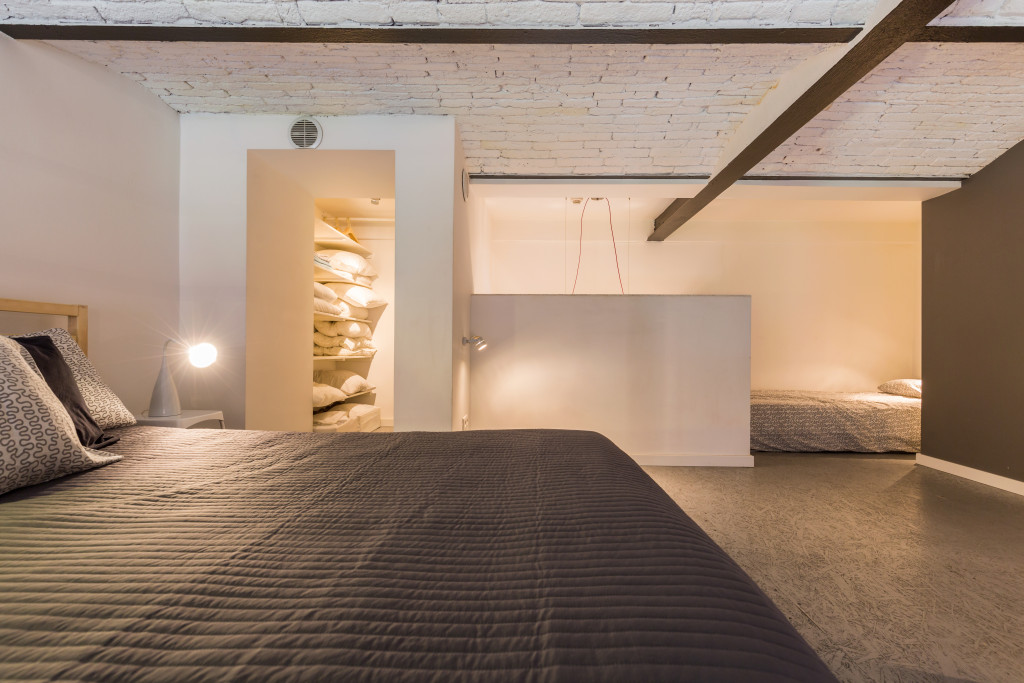The pandemic has made many people realize the importance of their homes, and as a result, numerous individuals have embarked on home improvement projects. However, the average home renovation cost can be prohibitively high for some; according to a study by Houzz, the median home renovation project in 2021 cost around $18,000. For this reason, approximately three in ten homeowners opt to do these projects themselves.
Fortunately, a wealth of online blogs and tutorials are available to guide homeowners through these endeavors. And among the most accessible yet impactful home improvement projects is changing up the walls with wallpapers. So, learning how to install wallpapers is a great way to give any room in your home an immediate makeover – without breaking the bank.
This article will provide a step-by-step guide on successfully installing wallpaper, allowing you to transform any room in your home with ease.
How To Prepare My Wall for Wallpaper Installation?

One common mistake first-timers make when installing wallpaper is not properly preparing the wall. Prepping the wall is crucial because it ensures the wallpaper adheres well and looks flawless. The wallpaper may bubble or peel without proper preparation, leaving you with an unsightly finish.
To prepare your wall for wallpaper installation, you will need to follow a few simple steps:
- Clean the wall: Make sure the wall is clean and free of dirt, dust, or debris. Use a damp cloth to wipe down the surface and allow it to dry completely.
- Repair any damage: Check the wall for cracks, holes, or other damage. Repair any issues with spackling or joint compound and allow it to dry completely.
- Sand the wall: Once the repairs are dry, sand the wall lightly with sandpaper. This process will create a smooth surface for the wallpaper to adhere to.
- Prime the wall: Apply a coat of primer to the wall. This material will help the wallpaper stick to the wall and create a barrier between the wall and the wallpaper, preventing the adhesive from damaging the wall.
What Are the Things I Need To Install My Wallpaper?
Preparing the things necessary for wallpaper installation is crucial in ensuring that the process runs smoothly and that no time gets wasted. Having all the required items before you begin can help avoid unnecessary delays or interruptions. The following items are essential for wallpaper installation:
Wallpaper

You cannot install wallpaper without the actual wallpaper. Make sure you have enough rolls to cover your wall with a margin of error, as it can be challenging to match the print and texture of existing wallpaper if needed.
The type of wallpaper you choose is also critical, as it will set the tone and mood of the room. Consider the color, pattern, and texture of the wallpaper when selecting. You can even opt for custom wallpapers with unique designs to add a personal touch to your home.
Wallpaper Paste
Wallpaper paste is necessary to stick the wallpaper to the wall. Be sure to choose a paste that is appropriate for your wallpaper type. For instance, use a vinyl-ready paste for vinyl wallpapers and an acrylic paste for paper wallpapers.
If you’re unsure of what type of paste to use, consult with a professional or refer to the manufacturer’s instructions. You can also buy wallpapers that come pre-pasted. This way, you won’t have to worry about mixing the paste.
Wallpaper Smoothing Tool
A wallpaper smoothing tool is used to smooth out air bubbles and ensure the wallpaper is even and straight. You can purchase these tools in any home improvement store.
If you can’t access a wallpaper smoothing tool, you can make your own using an old credit card or a plastic spatula. Simply ensure the tool is thin enough to slide underneath the wallpaper without ripping it.
Utility Knife
A utility knife is used to trim the wallpaper to size and cut around obstacles such as outlets or light switches. A sharp knife is essential for this task, as it ensures a smooth and clean cut. However, be careful not to cut into the wall or pull the wallpaper too hard.
Measuring Tape
You will need a measuring tape to measure the wall and ensure you have enough wallpaper. A retractable steel measuring tape is ideal; it will stay in place and make your measurements more accurate.
Level
To ensure your wallpaper is installed straight, use a level during installation. Ensure the level is slightly wider than the width of your wallpaper roll to get more accurate results. Although not required, having a level makes the job much more manageable and ensures a professional finish.
Step Ladder
A step ladder is necessary to reach higher wall areas and ensure you can work comfortably and safely. Ideally, you should use an adjustable step ladder that can be set to the height of your wall. But you can also use other ladders, such as an extension ladder or an A-frame ladder. What matters is that you can reach the wall without any issues.
Sponge and Clean Water
To ensure a job is well done, you will need a sponge and some clean water. You can use these items to remove excess paste or trimmings along the edges of the wallpaper. You can also use a damp cloth as an alternative to clean up any paste smudges on the wall.
Wall Primer
Wall primer is necessary to create a smooth and even surface for the wallpaper to adhere to. Before you apply the primer, make sure to check if the wall is painted or unpainted. If it’s unpainted, then a coat of primer is necessary; if it’s painted, you can use a sanding block to lightly sand the wall and remove any bumps.
Drop Cloth
A drop cloth is necessary to protect the floor and furniture from any paste spills or drips during the installation process. This item is also helpful if any accidental tearing or ripping occurs, as it will absorb the water and paste that comes off.
If you don’t have a drop cloth, use newspaper or plastic instead. Ensure that the material is thick enough to cover an entire area and protect it from getting damaged.
How To Install Wallpaper?
You can install wallpaper at home with a few techniques and some basic knowledge. Here is a step-by-step guide to help you get started:
Preparing the Walls
Before installing wallpaper, it is essential to prepare the walls properly. This step includes cleaning and repairing any damage, removing wallpaper glue, sanding the walls to create a smooth surface, and applying a primer. You should also check if the wall is suitable for wallpaper installation, especially if it has been previously painted with oil-based paint, as wallpaper may not adhere well to such surfaces.
Measuring and Cutting the Wallpaper
To determine how much wallpaper you need, measure the width and height of the wall you wish to cover. Add a few inches to the height and width to allow for trimming. Cut wallpaper into strips, allowing for an overlap of 1-2 inches at the top and bottom. This method will ensure a seamless and clean finish.
Applying the Wallpaper Adhesive

Apply the adhesive to the back of the wallpaper according to the manufacturer’s instructions. Be sure to spread the glue evenly, avoiding any clumps or drips. You can use a brush, roller, or trowel to apply the adhesive.
Hanging the Wallpaper
Once you have applied the wallpaper paste to the back of the wallpaper, start by hanging the strips at the top of the wall. Starting from the top of the wall, align the wallpaper strip with the ceiling and press it firmly into place, smoothing it out with a wallpaper smoothing tool as you go. Continue to hang each strip, ensuring that they are aligned and that there is no overlap or gaps between them.
Trimming the Wallpaper
Once the wallpaper is hung, trim any excess at the top and bottom using a sharp utility knife. Be sure to cut the wallpaper cleanly and straight, and avoid tearing or pulling the wallpaper. You can also use a cloth to remove any glue residue.
Cleaning Up
After trimming, wipe down the wallpaper with a damp sponge to remove any excess paste. Use a clean towel to dry the wallpaper, and be sure to clean up any paste spills or drips on the floor or furniture.
How Much Does It Cost To Install a Wallpaper?
When considering installing wallpaper, one of the most significant factors to consider is the cost. The cost of installation can vary depending on a variety of factors, including the size of the room, the type of wallpaper chosen, and whether the installation is done professionally or as a DIY project.
DIY vs. Professional Installation
One way to save on the cost of wallpaper installation is to do it yourself. However, it is essential to note that wallpaper installation can be challenging, particularly if you are a first-timer. It may take longer to complete the project, and additional costs may be associated with repairing any mistakes made during the installation process.
On the other hand, professional installation can be a bit more expensive but offers several benefits. Professional wallpaper installers have the experience and expertise to complete the job quickly and efficiently. They also have the right tools and equipment to ensure a flawless finish, reducing the risk of mistakes or damage to the wallpaper.
If you choose to have your wallpaper professionally installed, it is vital to research and compare different installers to find one that suits your needs and budget. You can search for “wallpaper installation near me” online to find reputable installers in your area.
Common Mistakes to Avoid
Installing wallpaper can be a challenging task, especially if you are a first-timer. Making mistakes during the installation process can lead to a less-than-perfect finish and may even require starting the process all over again. To help ensure a successful installation, it is essential to avoid common mistakes.
One of the most common mistakes people make when installing wallpaper is not preparing the walls correctly. Failing to remove old wallpaper, fill in cracks or holes, or adequately clean the walls before installation can lead to bubbles, wrinkles, and other imperfections in the wallpaper.
Another common mistake is choosing the wrong type of wallpaper for the room. For example, choosing vinyl wallpaper for a room with high humidity levels, like a bathroom, can cause the wallpaper to peel and become damaged over time.
Measuring and cutting the wallpaper incorrectly is also a common mistake. Measuring the walls carefully and adding extra length is vital to account for pattern matching and trimming. Cutting the wallpaper too short or at the wrong angle can result in an uneven finish.
Applying too much or too little adhesive is another common mistake. Too much glue can cause the wallpaper to slide, while too little can lead to bubbles and wrinkles.
Finally, failing to clean up the excess adhesive and trimming after hanging the wallpaper can leave unsightly marks on the finished product.
Can You Put Wallpaper Over a Wallpaper?
In general, it is not advisable to put wallpaper over existing wallpaper. That is because the new wallpaper will not adhere correctly to the old wallpaper, resulting in a less-than-perfect finish. Over time, the layers of wallpaper can also start to peel or bubble, making it difficult to remove the wallpaper in the future.
Additionally, if the old wallpaper is textured or has a pattern, it may show through the new wallpaper, causing an uneven and unprofessional-looking finish.
If you must install new wallpaper over old wallpaper, it is crucial to prepare the wall correctly by smoothing out any bumps, tears, or wrinkles in the old wallpaper. You should also consider using a wallpaper primer to help the new one adhere to the old one. However, removing the old wallpaper before installing new wallpaper is still recommended to ensure a flawless and long-lasting finish.
What To Do After Installing a Wallpaper?
After installing wallpaper, you can do a few things to ensure a successful and long-lasting finish. First, allow the wallpaper to dry completely before moving furniture or hanging decorations on the walls. This process can take anywhere from 24 hours to a few days, depending on the type of wallpaper and adhesive used.
Once the wallpaper is dry, inspect the seams and edges for any bubbles or wrinkles and smooth them out with a smoothing tool. Finally, clean up any excess adhesive or trim any extra wallpaper with a sharp utility knife. Proper care and maintenance allow your newly installed wallpaper to last for years.
FAQs
How to hide wallpaper seams after installation?
You can use a seam roller to smooth out the seams and press them firmly into place to hide wallpaper seams after installation. You can also use wallpaper seam glue to secure the seams and prevent them from peeling. For a more permanent solution, apply joint compound over the seams, sand it down once it is dry, and then paint over it to match the wallpaper.
How long does it take to install wallpaper?
The amount of time it takes to install wallpaper can vary depending on the room’s size, the pattern’s complexity, and the installer’s experience. On average, installing wallpaper in a single room can take a few hours to a full day. Larger or more complex projects may take longer, and it’s essential to allow time for preparation, cutting, and smoothing out any bubbles or wrinkles in the wallpaper.
Can you paint over the wallpaper?
Yes, it is possible to paint over wallpaper. However, it is important to properly prepare the wallpaper beforehand by cleaning it thoroughly and sanding down any bumps or wrinkles. It’s also important to use a high-quality primer and paint to ensure a smooth and even finish. Painting over wallpaper can be a quick and cost-effective way to update the look of a room, but it’s important to weigh the pros and cons before making a decision.
In conclusion, installing wallpaper can be a fun and rewarding DIY project that can completely transform the look of your home. With the right tools, preparation, and technique, you can achieve a beautiful and long-lasting finish that you can enjoy for years.



